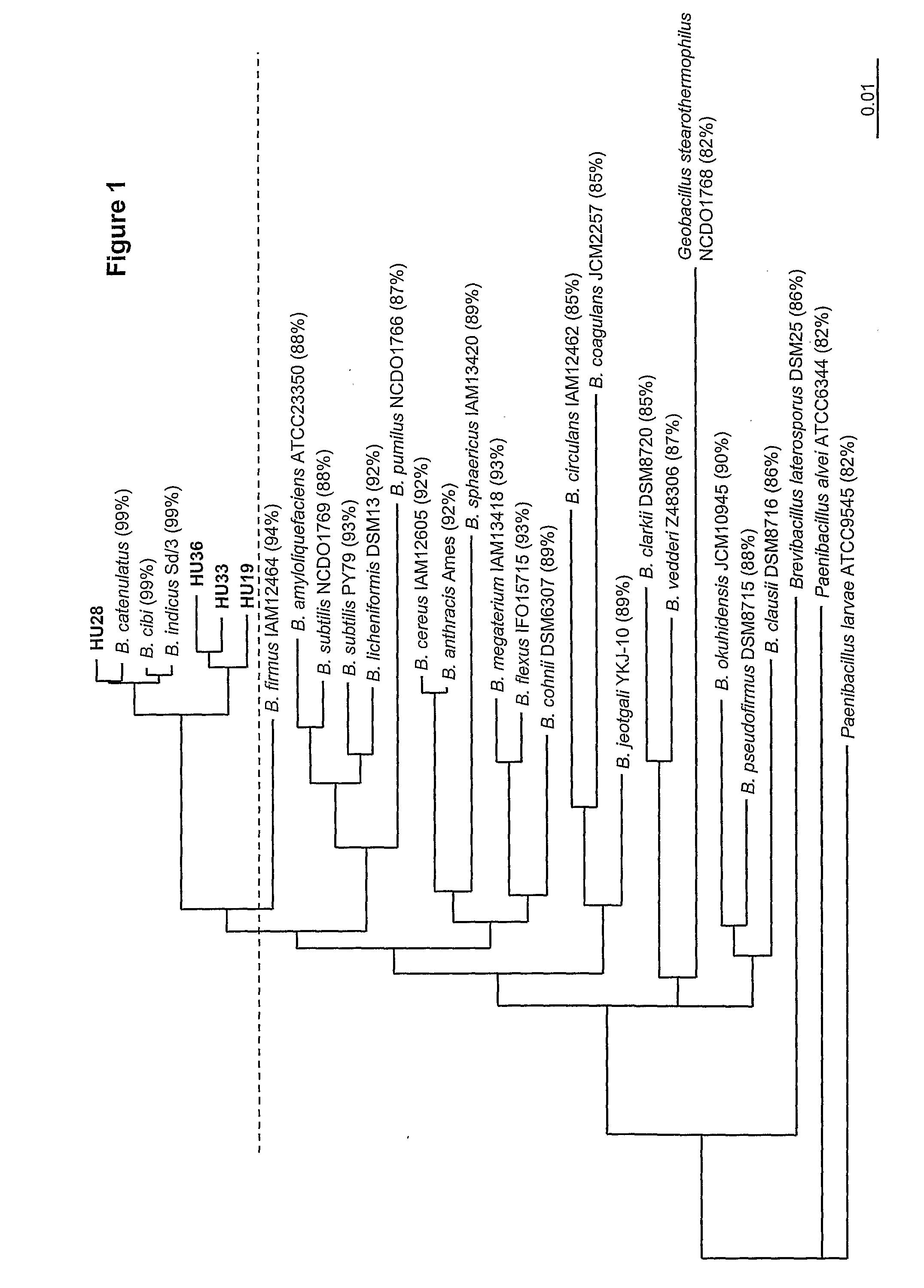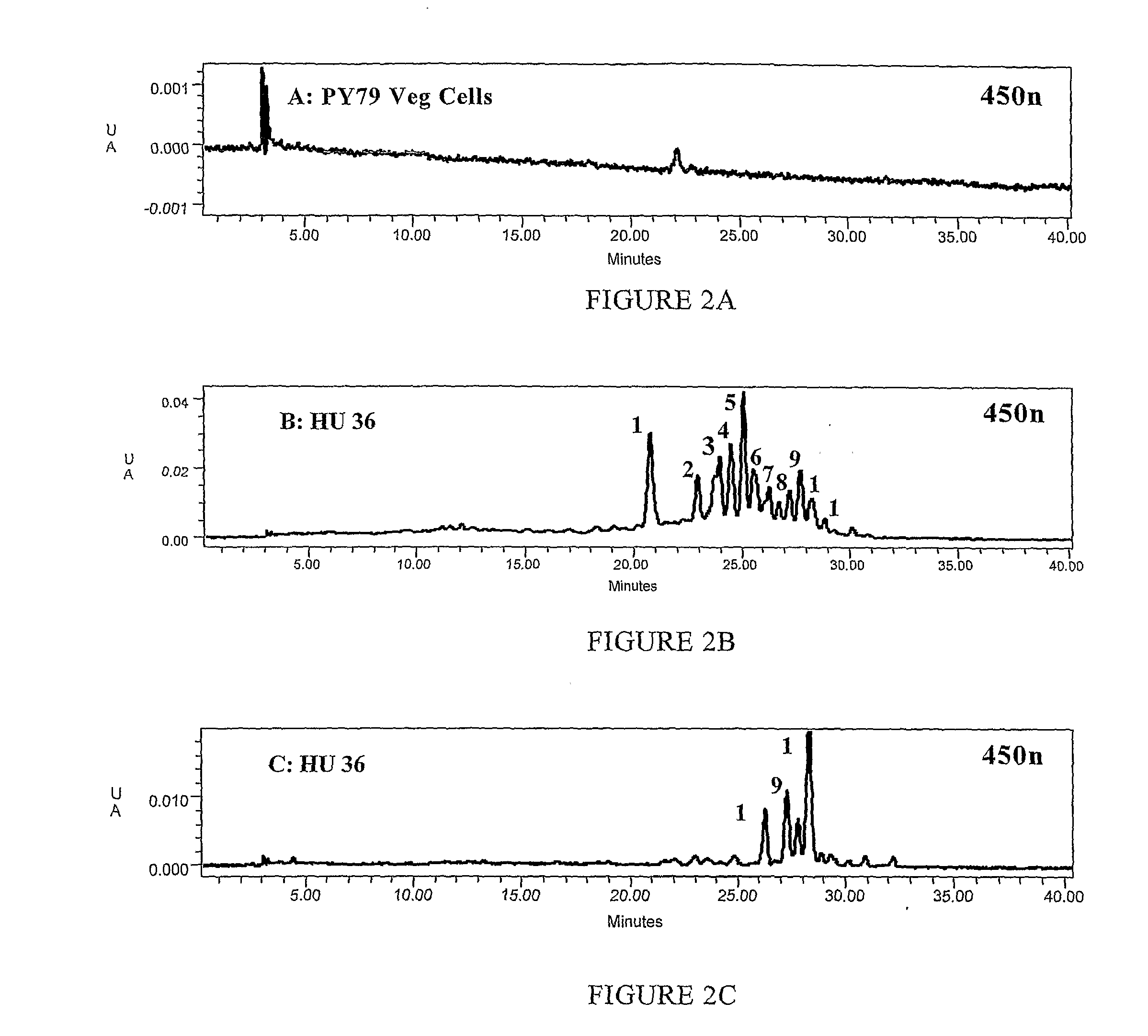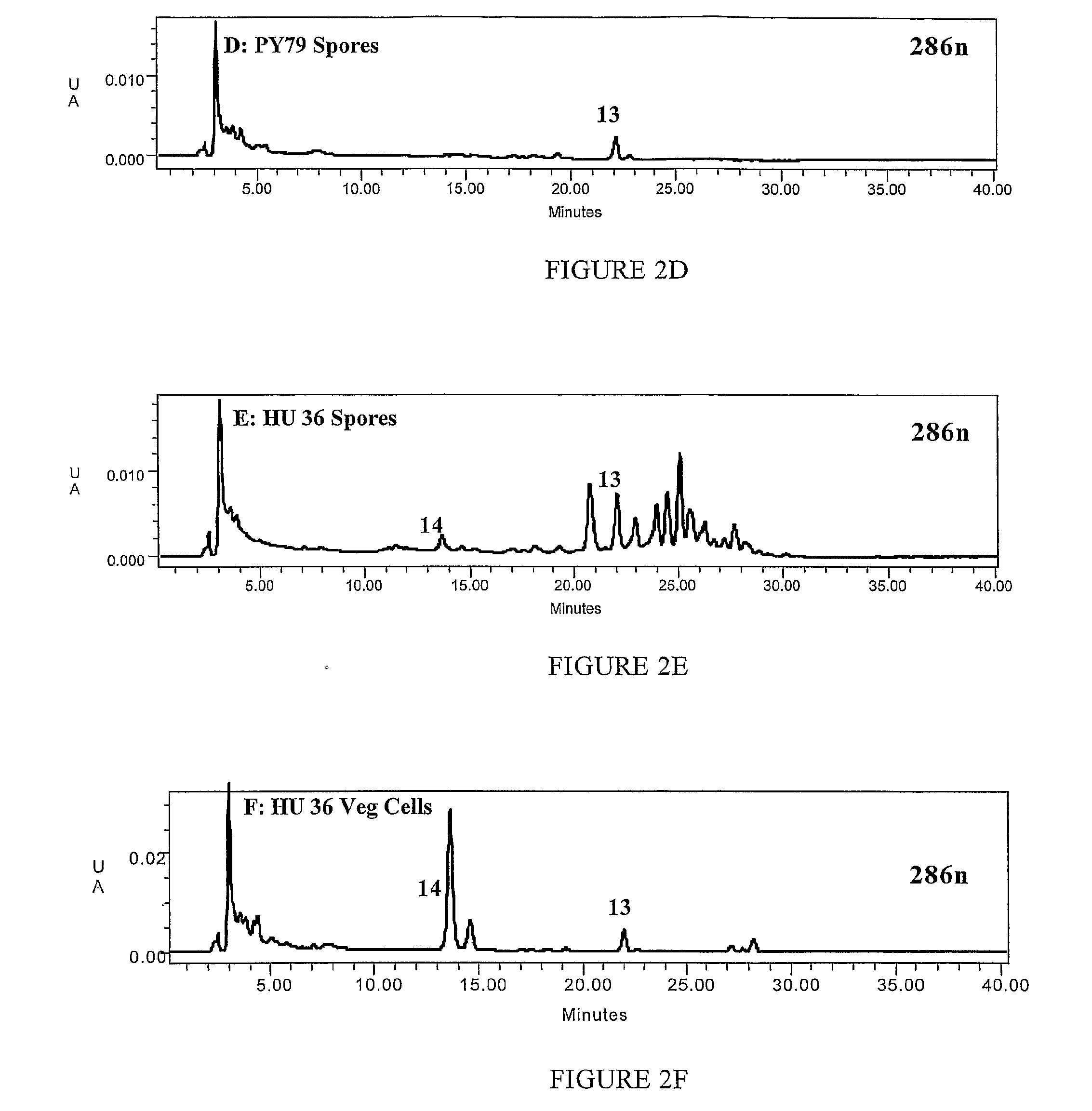Bacterial Production of Carotenoids
a technology of sporeforming bacteria and carotenoids, which is applied in the direction of biocide, plant growth regulators, animal feeding stuff, etc., can solve the problems of lack of potential synergistic nutrients present in biological mixtures, production of stereo isomers not found in natural products, and contamination with reaction intermediates/products, etc., to optimise carotenoid production, the metabolic diversity of products is extended considerably, and the metabolic biodiversity is increased
- Summary
- Abstract
- Description
- Claims
- Application Information
AI Technical Summary
Benefits of technology
Problems solved by technology
Method used
Image
Examples
example 1
[0210]Vegetative cell growth was made on LB agar and sporulation on DSM (Difco Medium) agar (Nicholson and Setlow, 1990). To prepare large quantities of spores free from vegetative cells sporulation was made in DSM liquid medium using the exhaustion method as outlined elsewhere (Nicholson and Setlow, 1990). In this method sporulation was allowed to proceed for 24 h at 37° C. before removal of contaminating vegetative cells by lysozyme treatment. Vegetative cells were prepared by growth of bacteria in LB medium (37° C.) until cultures reached an OD600 nm of approximately 2.0.
[0211]Heat-resistant spores present in freshly voided human feces (that retained their pigmentation) were isolated. On average, spore counts found in feces were in the range of 104 cfu / g. Using this approach, six yellow-orange pigmented colonies were readily discernable on sporulation agar plates. These isolates were labelled Bacillus A to Bacillus F. Basic characteristics are shown in Table 1.
[0212]Resistance to...
example 2
[0214]The pigmentation of the isolated spore formers was investigated. Colonies were isolated on their ability to produce pigmented colonies.
[0215]Strains HU 13, HU 28, HU 33 and the control strain PY 79 were compared When grown on LB agar colonies of the HU strains initially were yellow after overnight incubation at 37° C. As incubation was continued the colonies of the HU strains gradually assumed an orange hue. The control strain showed the usual cream-grey appearance of Bacillus colonies.
[0216]By contrast, sporulation on DSM agar plates produced colonies that were orange. To determine whether the orange colour was specific to spore formation we made cultures of spores grown by exhaustion in DSM medium and ensured that there were no residual vegetative cells using an established protocol of treatment with lysozyme followed by extensive washing. Similarly, cultures of vegetative cells were made using incubation in LB medium until the culture reached an OD600 of 2.0. Cultures prepa...
example 3
[0217]Phylogenetic analysis of the strains isolated in Example 1 was performed. To assign strains to bacterial species we sequenced the entire 16S rRNA gene (rrnE) from cells taken from each colony type in a manner as described previously (Hoa et al., 2000). The sequence ID numbers of the 16S rRNA gene of each isolate is given in Table 2:
TABLE 2IsolateSeq ID No.A (HU 13)1B (HU 16)2C (HU 19)3D (HU 28)4E (HU 33)5F (HU 36)6
[0218]The 1,400 bp amplicon was then sequenced and analyzed using BLAST (http: / / www.ncbi.nlm.nih.gov / ) to find the nearest matching species. The sequences were then aligned by ClustalW programme (http: / / align.genome.jp / ) and percentage of similarity recorded.
[0219]Neighbour-joining trees are shown in FIG. 1. All were closely related to Bacillus catenulatus, B. indicus, B. jeogtgali and B. cibi.
PUM
| Property | Measurement | Unit |
|---|---|---|
| molecular weight | aaaaa | aaaaa |
| flow rate | aaaaa | aaaaa |
| temperature | aaaaa | aaaaa |
Abstract
Description
Claims
Application Information
 Login to View More
Login to View More - R&D
- Intellectual Property
- Life Sciences
- Materials
- Tech Scout
- Unparalleled Data Quality
- Higher Quality Content
- 60% Fewer Hallucinations
Browse by: Latest US Patents, China's latest patents, Technical Efficacy Thesaurus, Application Domain, Technology Topic, Popular Technical Reports.
© 2025 PatSnap. All rights reserved.Legal|Privacy policy|Modern Slavery Act Transparency Statement|Sitemap|About US| Contact US: help@patsnap.com



